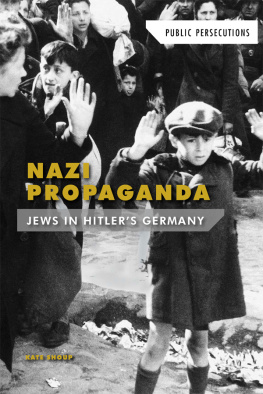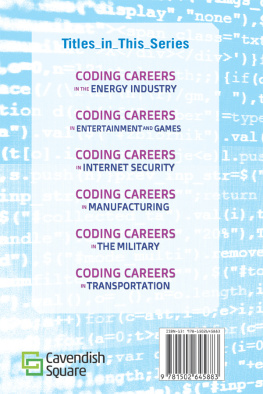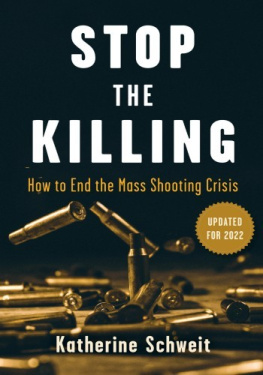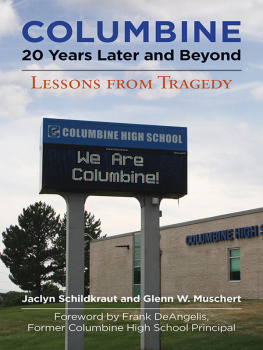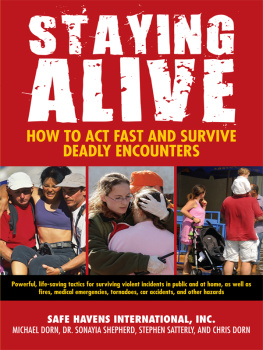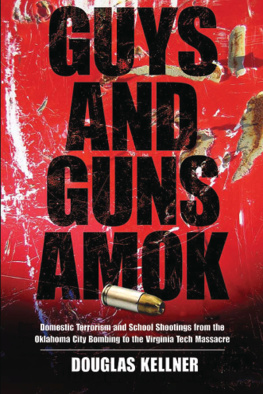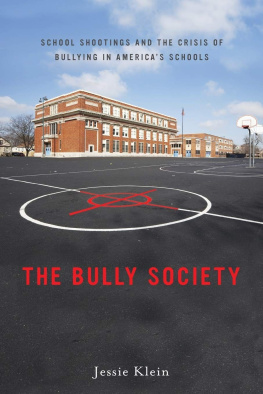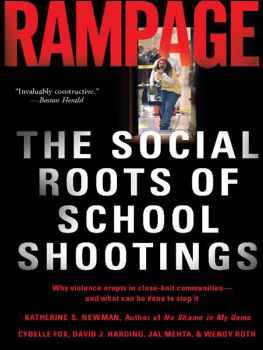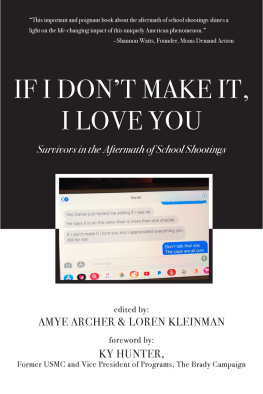
Published in 2020 by Cavendish Square Publishing, LLC
243 5th Avenue, Suite 136, New York, NY 10016
Copyright 2020 by Cavendish Square Publishing, LLC
First Edition
No part of this publication may be reproduced, stored in a retrieval system, or transmitted in any form or by any meanselectronic, mechanical, photocopying, recording, or otherwisewithout the prior permission of the copyright owner. Request for permission should be addressed to Permissions, Cavendish Square Publishing, 243 5th Avenue, Suite 136, New York, NY 10016. Tel (877) 980-4450; fax (877) 980-4454.
Website: cavendishsq.com
This publication represents the opinions and views of the author based on his or her personal experience, knowledge, and research. The information in this book serves as a general guide only. The author and publisher have used their best efforts in preparing this book and disclaim liability rising directly or indirectly from the use and application of this book.
All websites were available and accurate when this book was sent to press.
Library of Congress Cataloging-in-Publication Data
Names: Shoup, Kate, 1972- author.
Title: Dealing with school shootings / Kate Shoup.
Description: First edition. | New York: Cavendish Square, 2020. |
Series: Helping yourself, helping others | Includes bibliographical references and index. |
Audience: Grades: 7-12. Identifiers: LCCN 2018053872 (print) | LCCN 2019001075 (ebook) |
ISBN 9781502646316 (ebook) | ISBN 9781502646309 (library bound) | ISBN 9781502646293 (pbk.)
Subjects: LCSH: School shootings--Juvenile literature. | School shootings--Prevention--Juvenile literature.
Classification: LCC LB3013.3 (ebook) | LCC LB3013.3 .S5 2020 (print) | DDC 371.7/82--dc23
LC record available at https://lccn.loc.gov/2018053872
Editorial Director: David McNamara
Editor: Caitlyn Miller
Copy Editor: Rebecca Rohan
Associate Art Director: Alan Sliwinski
Designer: Ginny Kemmerer
Production Coordinator: Karol Szymczuk
Photo Research: J8 Media
The photographs in this book are used by permission and through the courtesy of: Cover Dot .
Printed in the United States of America
Some of the images in this book illustrate individuals who are models.
The depictions do not imply actual situations or events.
CONTENTS
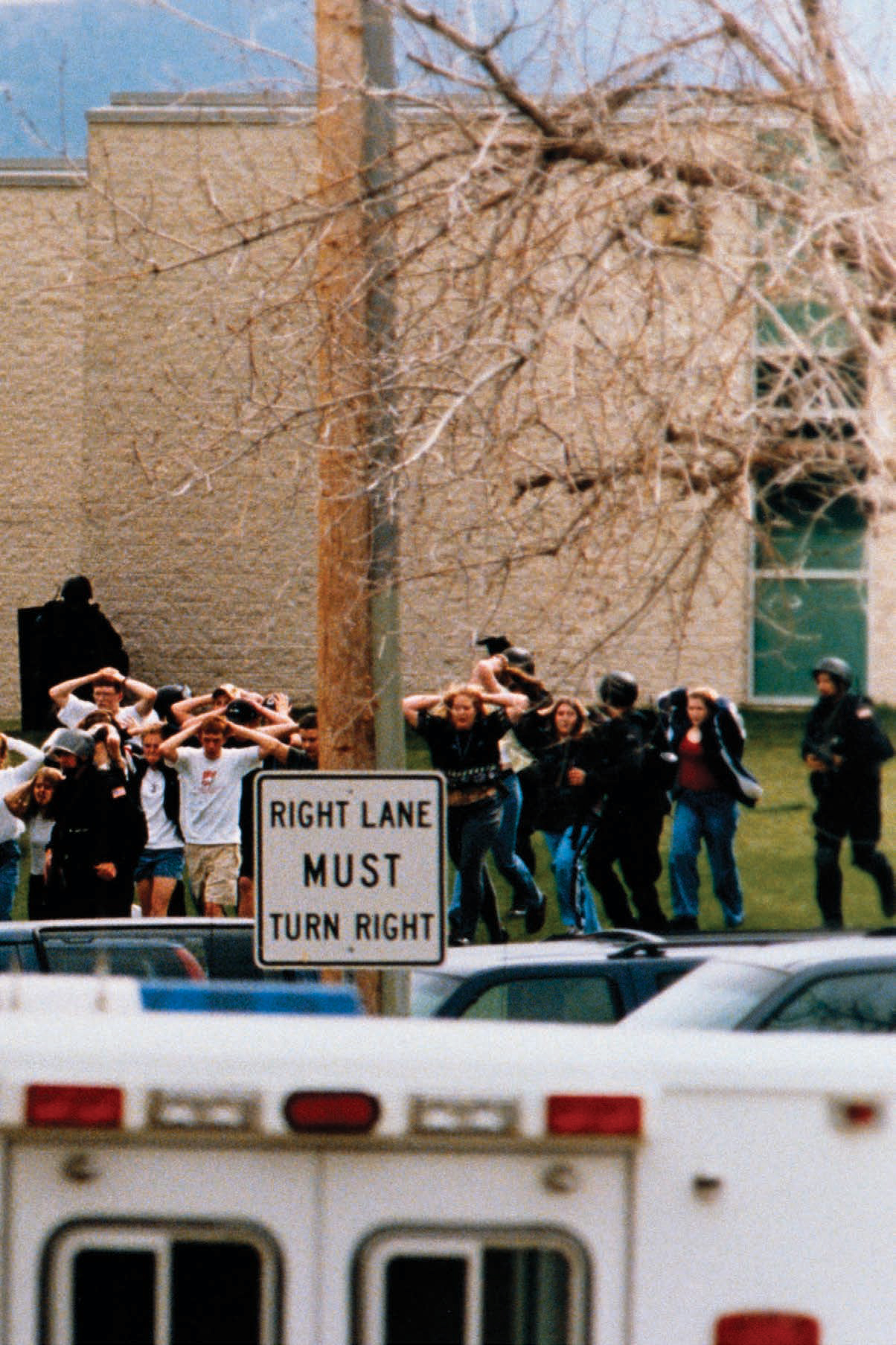
Students flee Columbine High School during a shooting that killed twelve students and one teacher.
Chapter 1
School Shootings in America
O n the morning of April 20, 1999, Eric Harris and Dylan Kleboldboth seniors at Columbine High School near Littleton, Coloradolaunched one of the deadliest school shootings in American history. At 11: 19 a.m., Harris and Klebold, wearing black trench coats that concealed multiple guns, began shooting on school grounds. During the next forty-nine minutes, the boys murdered twelve of their fellow students and one teacher, and wounded twenty-one others. They also set off several pipe bombs, set the cafeteria on fire, shot up the principals office, and traded gunfire with police. Finally, at 12: 08 p.m., as law-enforcement officers closed in, Harris and Klebold took their own lives. As devastating as this attack was, it might have been even worse: Harris and Klebold had placed more than one hundred explosive devices throughout the school, intending to cause even greater harm. Thankfully, most of these failed to go off.
There were warning signs. Harris posted threatening messages online, and Klebold wrote disturbing stories. The two allegedly showed classmates the weapons they were collecting. In the wake of the Columbine shooting, American schools would change the way they handled students who threatened violence.
SCHOOL SHOOTINGS: BY THE NUMBERS
The Centers for Disease Control and Prevention (CDC) is the US government agency responsible for protecting public health. It used to be that the CDC did a lot of research on the effects of guns on public health. In a 1993 study on gun ownership, the agency found that, on the whole, keeping a gun in the home did not protect people from harm. In fact, it made it almost three times more likely that someone inside the homeusually a friend or family memberwould be shot and killed.
Pro-gun groups like the National Rifle Association (NRA) worried that the findings of this and other reports on gun use would cause the public to push for controls on gun ownership. To prevent this, these groups lobbied US lawmakers to ban the CDC from speaking in favor of gun control. They also convinced lawmakers to withdraw funding for CDC research on guns. Lawmakers enacted this policy in 1996. Since then, the CDC has conducted no research on gun violence in the United States, including school shootings. (Interestingly, the lawmaker behind this policy, Republican congressman Jay Dickey, later regretted its enactment. He even joined with Mark Rosenberg, who had been responsible for overseeing research on gun violence at the CDC before Congress shut it down, to push for increased funding for gun research.)
Today, the CDC maintains databases on all sorts of public-health problems, such as infectious diseases, drug use, and automobile accidents. These databases help researchers track these problems and come up with ways to possibly solve them. No such CDC database exists for gun violence or school shootings, however. This makes it extremely difficult to determine exactly how many school shootings have occurred in the United States, and to solve the problem of gun violence in schools.
Complicating matters, different groups define school shootings in different ways. For example, the Washington Post defines a school shooting as any shooting that occurs on school grounds at an elementary or a secondary school immediately before, during, or after the school day. Using that definition, as of October 2018, there have been 221 shootings since 1999. At least 141 students, teachers, and staff have been killed, and an additional 287 people wounded.
Others use a wider definition. For example, the Gun Violence Archive, which is a nonprofit organization that tracks gun violence, defines school shootings the same way as the Washington Post. But it also includes shootings on college and university campuses, as well as shootings on school property during extracurricular activities such as football games and school dances. As a result, as of October 2018, the Gun Violence Archive cites somewhat larger numbers of school shootings nationwide: 254 since just 2012, with 138 killed and 454 wounded.
Sometimes it feels like theres a new school shooting in America every day. In reality, however, school shootings are very rare. The Washington Post says the odds of a student being shot to death at school are 1 in 614,000,000. In other words, kids have a better chance of winning the lottery than of being shot at school! Even more rare are so-called school rampages, like the one at Columbine, which involve the random killing of multiple students. As of 2018, just eleven schools have experienced school rampages (defined as a school shooting involving four or more victims and at least two deaths) since 1999.
Still, even one school shooting is one too many. School shootings have a devastating impact not just on the school but on the surrounding community and the nation as a whole. A report by the Federal Bureau of Investigation (FBI) puts it this way: A tragedy such as the Columbine High School shooting spreads horror, shock, and fear to every corner of the country.


